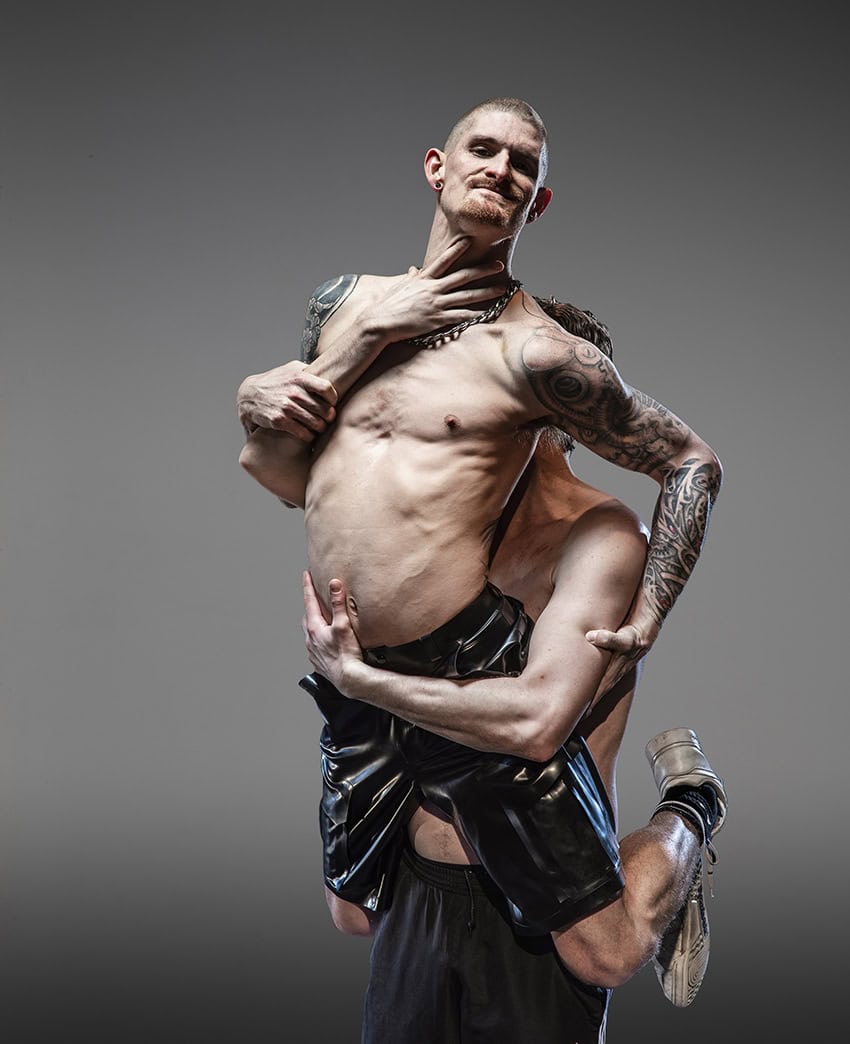Figs in Wigs, Big Finish, Battersea Arts Centre
Posted: April 17th, 2024 | Author: Nicholas Minns & Caterina Albano | Filed under: Performance | Tags: Alice Roots, Figs in Wigs, Nao Nagai, Naomi Kuyck-Cohen, Rachel Porter, Ray Gammon, Rosie Ridgeway, Sarah Moore, Suzanna Hurst | Comments Off on Figs in Wigs, Big Finish, Battersea Arts CentreFigs in Wigs, Big Finish, Battersea Arts Centre, March 15, 2024

There was an immediate incongruity on entering the Battersea Arts Centre Council Chamber of hearing Rosie Ridgeway’s sound design of a sacred a cappella voice and seeing Naomi Kuyck-Cohen’s stage furniture of industrial ventilation ducting coiled in various lengths under Nao Nagai’s lighting. It is the setting for Figs in Wigs’ rather desolate opening scene – Chapter Zero – for Big Finish, an irreverent yet trenchant commentary in seven chapters (acts) on the links between the dire state of the arts in this country, the sinking of the Titanic and the extinction of the species. Like a good satirical cartoon, we are invited to consider in exaggerated detail the all-too-visible effects on the arts and the natural environment of an unspecified yet widely understood cause. And it felt as if the audience was there in the Council Chamber — itself the seat of a former political body that once had a key role in the birth of the suffragette and labour movements — to relish seeing on stage a reflection of what they already know exists so they could laugh at their own collective misfortune.
There are two parallel layers in Big Finish: one looks outwards at what the five performers — Ray Gammon, Suzanna Hurst, Sarah Moore, Rachel Porter and Alice Roots — call the ‘shit show’ that is our arts environment, while the other looks inwards at their colourfully irreverent ruminations. As each successive chapter unpeels their perceptions and frustrations, one self-deprecatory slur at a time, the two layers naturally merge.
Figs in Wigs come to the rather bleak conclusion in Chapter Zero that if the great ship of the arts in this country is sinking, any grants are little more than publicly funded life jackets. It may seem ungrateful to lambaste the state of the arts when a little logo on the program indicates that Big Finish was supported using public funding by Arts Council England. Figs in Wigs did indeed get some money from ACE for the R&D phase of Big Finish but their application for funding the show was turned down. It’s an odd way to use public funds to encourage artists to get to the starting line and then disqualify them for the race, especially when ACE’s printed logo on the performance program suggests otherwise. Fortunately, there are two other logos on the program — Wandsworth Council and Bloomberg Philanthropies — that hopefully represent some alleviation in the funding shortfall.*

With its dogged determination that the show will still go on, Big Finish takes only two short opening chapters to offer a concise social and geological history of evolution, starting with a time when days had only four hours of light and ‘the earth was full of idiots’. A golf cart enters the stage driven by a dinosaur with four reptilian passengers. They deliver sand in bags and spread it neatly into a circle with rakes. With a heightened sense of mixed metaphor, we are reminded about our proclivity for burying our heads in the sand and that time is running out. Chapter Two segues effortlessly into what is called ‘The Survivors’, notably the crab’s ability to adapt to changing environments over millennia. It’s also an opportunity for the first dance, a hip-swinging crustacean side-step. In Chapter Three there’s an ode to human competitive practice as a game of musical towels on the beach, and a celebration of chance in a lottery game as a sly reminder that the Arts Council is part funded by the national lottery. The effects of water pollution on the manufacture of soft ice cream is parodied in a Mr. Whiffy portaloo, followed in Chapter Four by the Last Supper — the swansong, the big finish — with successive toasts to over-inflated egos, artistic mediocrity and analogies to predatorial insects. Chapter Five is a delightful last will and testament, before the apotheosis in Chapter 6 in which a string quintet sitting on their reinforced coattails plays on as the ship sinks in the soap suds.

The ideas in Big Finish may be expressed with blinding clarity but they are deliberately dressed in an aesthetic of amateur improvisation. It might look as if the production was pulled together using any and every available material, but there is a sophistication in this underhand aesthetic — thanks in part to Gammon’s costumes and Porter’s wigs and makeup — that belies the self-deprecatory tone of the texts. We are drawn into the ideas precisely because of Figs in Wigs’ deliciously performative improvisation. The aesthetic disrupts the message without masking the seething rage that produced it.
*Big Finish has been commissioned by BAC, Home, Cambridge Junction and Jerwood Arts.
